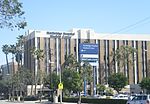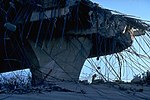Studio 56
All pages needing cleanupRecording studios in CaliforniaWikipedia introduction cleanup from October 2022
Studio 56 is a recording studio in California. Studio 56 was founded by Paul Schwartz with Tom Herzer and Jeff Fargus as a home studio at 7856 White Oak in Northridge, California. Schwartz established the studio as a production house, recording demos by artists such as Roy Orbison, Evelyn "Champagne" King, Smokey Robinson, Stephanie Mills, Fleetwood Mac, Burton Cummings, Howard Hewett, Moon Martin, Five Star, Billy Burnette, The Dwight Twilley Band, The Sylvers and The Jackson 5.
Excerpt from the Wikipedia article Studio 56 (License: CC BY-SA 3.0, Authors).Studio 56
White Oak Avenue, Los Angeles Northridge South Neighborhood Council District
Geographical coordinates (GPS) Address Nearby Places Show on map
Geographical coordinates (GPS)
| Latitude | Longitude |
|---|---|
| N 34.2137 ° | E -118.5185 ° |
Address
White Oak Avenue
White Oak Avenue
91328 Los Angeles, Northridge South Neighborhood Council District
California, United States
Open on Google Maps






